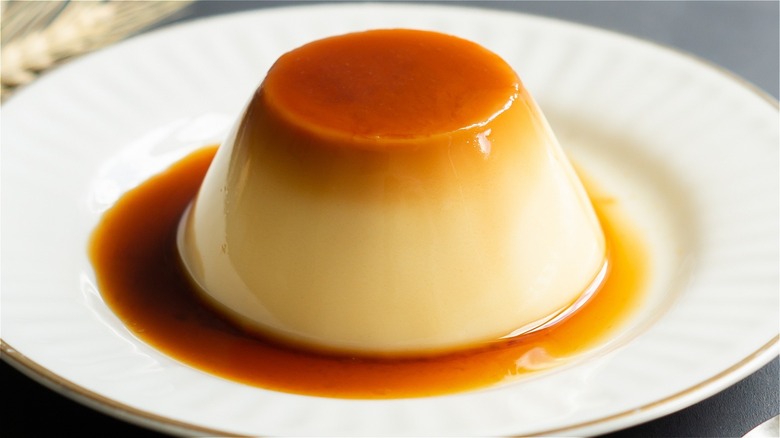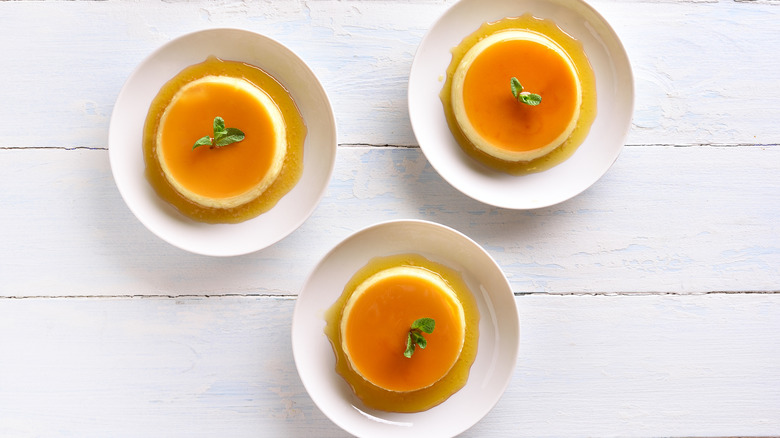The 3-Ingredient Flan Chefs Call 'Egg Poetry'
If you're like us, you probably ate too much cake in 2022. Thanksgiving, Christmas, and New Year's festivities all have their share tasty dishes and even tastier desserts. Who could even resist eating them? These sugary concoctions are often simply irresistible to anyone with a sweet tooth. Statista reports that 137.70 million Americans ate ready-to-eat cakes in 2020, and it is believed that the number will rise to 141.78 million by 2024. But not all desserts have to be showstopping cakes. There are also more straightforward desserts like flan.
But what is a flan, anyway? Dictionary.com defines a flan as a "dessert of sweetened egg custard with a caramel topping." And that definition only refers to a flan in Spanish cuisine. In the UK, on the other hand, a flan is an open-faced pastry with a tartlike shell that's filled with cream, fruit, or custard (or all of them) after it's been baked in a flan ring. And if that definition of flan in Spanish cuisine rings a bell or two, you've probably tasted some similar creations.
For example, you might've tried crème caramel. MasterClass reports that it's a sweet custard with a thin layer of caramel. Sounds the same as a flan, doesn't it? However, flan is shorter and wider. There's also another type of flan that some chefs might call "egg poetry."
Flan a la antigua is made with eggs, milk, and caramelized sugar
The New York Times revealed what most of us already know: Eggs are one of the most versatile cooking ingredients ever. There's not that much you can't do with eggs, from scrambled eggs, and frittatas, to cooking it over egg rice and curries or making Roman egg drop soup and flan de leche. And although flan de leche is often made with condensed or evaporated milk, flan a la antigua is made with only three key ingredients — sugar, eggs, and milk.
We Are Cocina reports that the savory variety of flan dates back to the Roman Empire, and it was later made into a sweet version by the Spaniards, who sweetened it with honey and later with caramelized sugar. The flan was brought over to the Americas and today it's a staple in many Latin American countries. Interestingly enough, leche flan is very popular in the Philippines, where it's a staple for Christmas and New Year's festivities. This rich dessert was brought to the country in the 1500s (per The Philippines Today).
However, per MasterClass, in the Philippines, flan is cooked on the stove, and it's also firmer than its global counterparts because it contains more egg yolks. And if you have some eggs, milk, and sugar in your kitchen, nothing is stopping you from baking your own flan to share with friends and family and enjoy its rich history.

